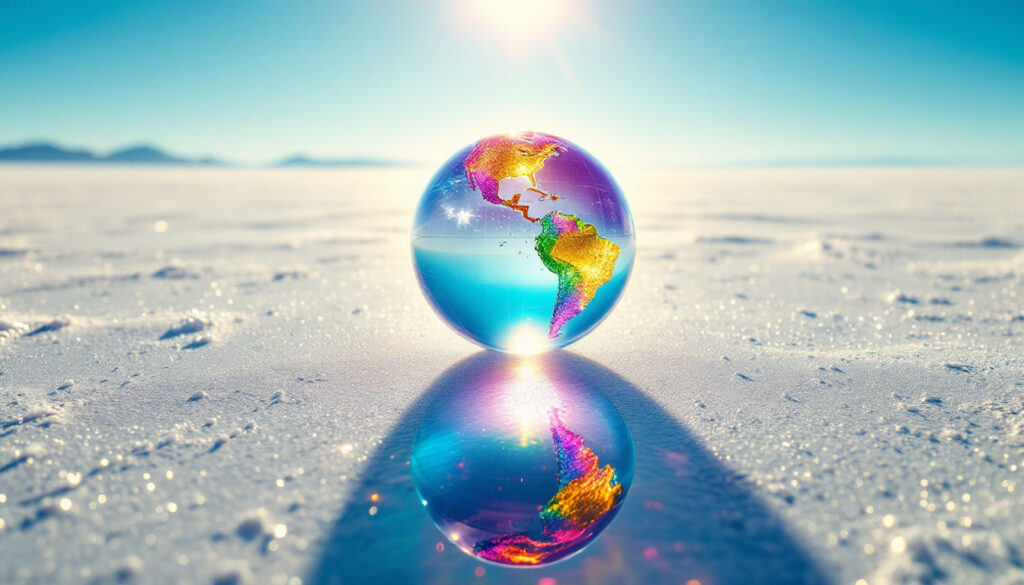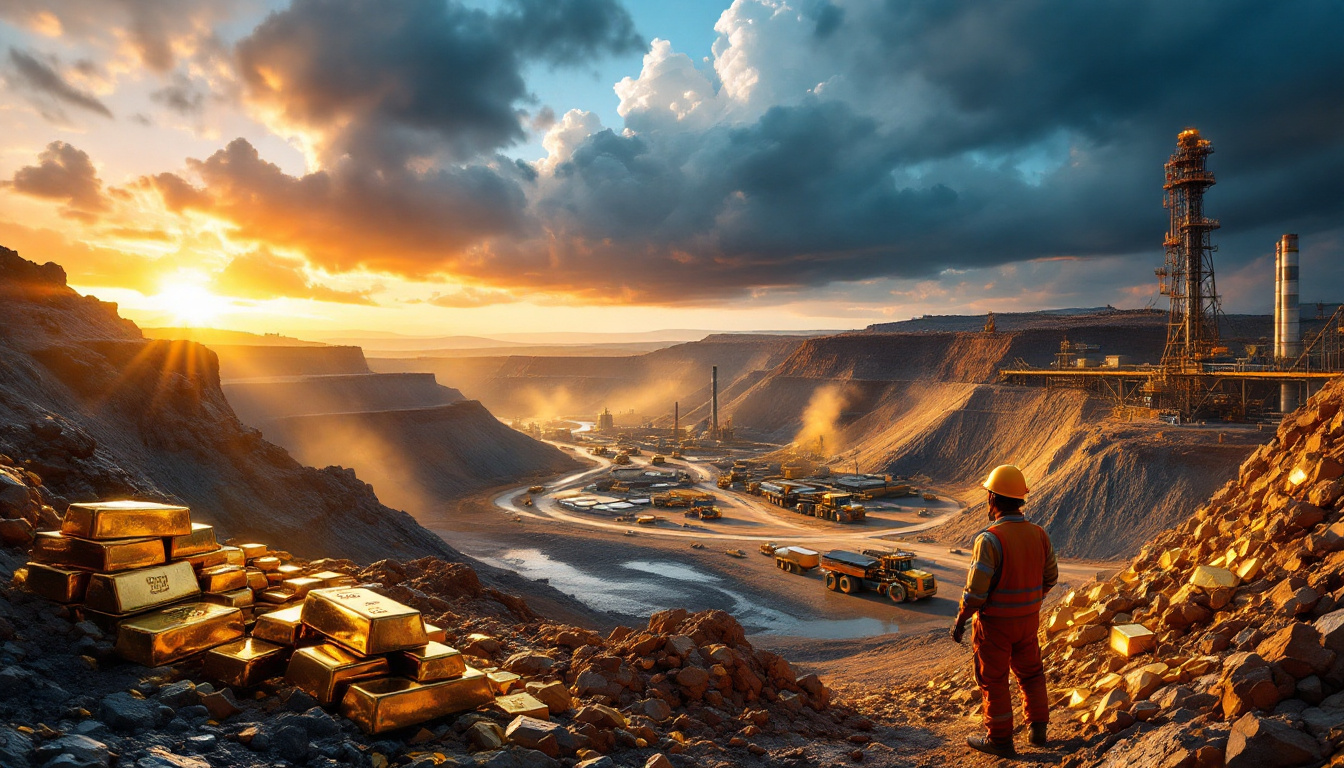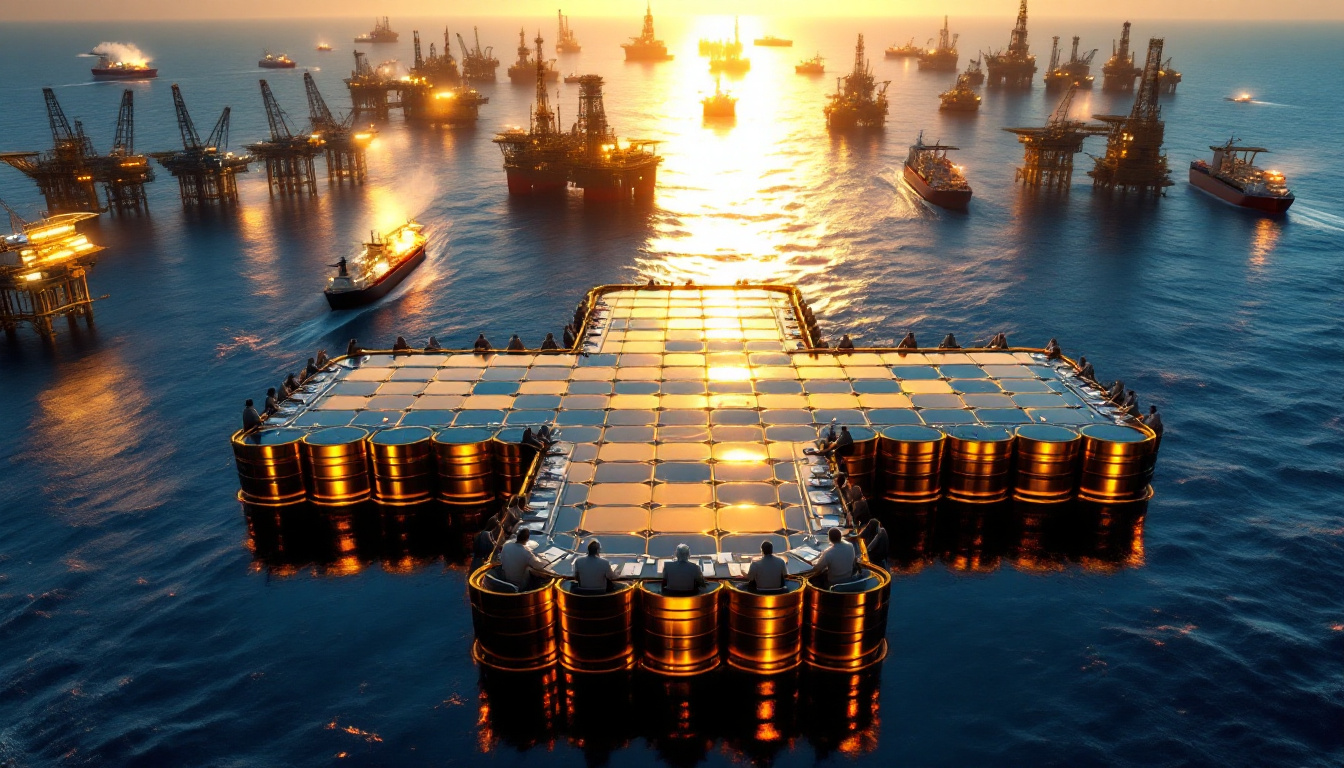Which Countries Have the Largest Lithium Reserves in the World?
The global race for lithium resources has intensified as the world shifts toward green energy technologies, making it crucial to understand which nations hold the keys to this vital resource. Current estimates place global lithium reserves at approximately 105 million metric tons, with these resources unevenly distributed across continents and countries.
Global Lithium Reserve Distribution
Bolivia stands as the undisputed leader in lithium reserves, possessing an estimated 23 million metric tons, which accounts for nearly 22% of the world's total reserves. This South American nation's reserves are primarily concentrated in the Salar de Uyuni, the world's largest salt flat, covering over 10,000 square kilometers.
Argentina follows closely behind with 22 million tons (20.94% of global reserves), with major deposits located in the "Lithium Triangle" salt flats, including Salar del Hombre Muerto and Salar de Olaroz. Despite these vast resources, Argentina's production capacity remains constrained by infrastructure limitations and economic challenges.
The United States ranks third globally with 14 million tons (13.32%), representing a dramatic upward revision from previous estimates of just 750,000 tons. This significant increase stems from improved geological assessments and the inclusion of previously unclassified resources, particularly in Nevada's Clayton Valley and North Carolina's spodumene deposits.
Chile, long considered a lithium powerhouse, holds the fourth position with 11 million tons (10.47%). Despite ranking fourth in reserves, Chile has historically been one of the world's top producers due to its advanced extraction infrastructure in the Atacama Desert, where favorable evaporation conditions enable efficient brine operations.
Australia rounds out the top five with 8.7 million tons (8.28%), yet leads global production through advanced hard-rock mining operations, particularly at the massive Greenbushes mine in Western Australia, which produces nearly 40% of the world's lithium from spodumene ore.
China, despite holding relatively modest reserves of 6.8 million tons (6.47%), has strategically positioned itself as the dominant force in lithium processing and refining, controlling over 60% of the world's lithium conversion capacity.
South American Lithium Triangle
The "Lithium Triangle" – encompassing Bolivia, Argentina, and Chile – contains an extraordinary 53.3% of global lithium reserves. This geological wonder stretches across the Andean region where the borders of these three countries meet, characterized by vast salt flats (salars) containing lithium-rich brine deposits.
These unique formations resulted from ancient lakes that evaporated over millennia, leaving behind mineral-rich solutions beneath salt crusts. The region's high altitude, intense solar radiation, and low precipitation create ideal natural conditions for lithium concentration and extraction through evaporation.
However, the Lithium Triangle faces significant challenges. Bolivia's reserves remain largely untapped due to nationalist policies restricting foreign investment, while Argentina struggles with economic instability affecting development timelines. Environmental concerns regarding water usage in these arid regions have also sparked conflicts with indigenous communities who depend on the fragile ecosystems.
"The concentration of lithium resources in South America's triangle represents both an opportunity and challenge for global supply chains," notes mining analyst Eduardo Bitran. "While the reserves are vast, the technical, political, and environmental complexities of extraction create significant uncertainty for future production capacity."
How Are Lithium Reserves Distributed Across Continents?
Understanding the continental distribution of lithium reserves provides critical insight into future supply scenarios and potential geopolitical implications as demand accelerates.
Major Continental Players
South America dominates the global lithium landscape with approximately 56 million tons, representing 53.3% of known reserves. This continental concentration has profound implications for global supply chains, as political decisions in just three countries can significantly impact worldwide availability.
North America holds a substantial position with about 18.7 million tons (17.8%), primarily driven by the United States' 14 million tons, supplemented by Canada's 3 million tons and Mexico's 1.7 million tons. The continent's lithium resources span diverse geological formations, from Nevada's clay deposits to Arkansas's bromine-rich brines.
Asia's lithium reserves, estimated at 7.85 million tons (7.47%), are dominated by China's 6.8 million ton share. The continent's reserves are generally more challenging to extract, often requiring advanced processing technologies to separate lithium from complex mineral formations.
Europe contains approximately 6.67 million tons (6.35%), with significant deposits in Germany (3.8 Mt), the Czech Republic (1.3 Mt), and Serbia (1.2 Mt). The continent's push toward energy independence has accelerated exploration and development efforts, particularly in the Rhine Valley where deep geothermal brines contain extractable lithium concentrations.
Australia, representing Oceania, holds 8.7 million tons (8.28%) and has leveraged these resources to become the world's leading lithium producer. The country's hard-rock mining expertise and established export infrastructure have positioned it as a critical supplier to Asian battery manufacturers.
Africa's estimated 5 million tons (4.76%) remain largely underdeveloped, with the Democratic Republic of Congo (3 Mt), Mali (0.89 Mt), and Zimbabwe (0.5 Mt) holding the continent's largest shares. These African resources could play an increasingly important role as demand grows and technology enables more efficient extraction from previously marginal deposits.
Emerging Lithium Regions
European lithium development has gained momentum as the region seeks to reduce dependence on imported battery materials. Germany's Upper Rhine Valley project aims to extract lithium from geothermal brines using innovative lithium production technologies that minimize environmental impact compared to traditional methods.
Serbia's Jadar Project, with 1.2 million tons of reserves, represents one of Europe's largest lithium developments but faces significant environmental opposition. The project's fate highlights the tension between Europe's green technology ambitions and environmental concerns about mining impacts.
"European lithium production is at a crossroads," explains Dr. Maria Kliemann of the European Battery Alliance. "The continent must balance its strategic autonomy goals with legitimate environmental and social considerations that have delayed several major projects."
African lithium exploration has accelerated dramatically since 2020, with the DRC's Manono project (estimated 3 Mt reserves) positioned to become one of the world's largest hard-rock lithium mines. Mali's Goulamina project and Zimbabwe's Arcadia mine represent additional significant developments on the continent, though infrastructure limitations and political instability present ongoing challenges.
North American reserves beyond the US are gaining strategic importance, with Canada's James Bay and Whabouchi projects advancing toward production. Mexico's Sonora lithium clay deposit (1.7 Mt) has become a focal point of resource nationalism, with the government declaring lithium a strategic mineral under state control in 2022.
What Is the Strategic Importance of Lithium Reserves?
The distribution of lithium reserves by country has transcended pure geological interest to become a matter of strategic national importance, particularly as the world accelerates toward electrification and renewable energy systems.
Applications and Growing Demand
Lithium-ion batteries represent the single largest application for this versatile metal, accounting for approximately 74% of global lithium consumption. These power systems have revolutionized transportation through electric vehicles and enabled the effective storage of intermittent renewable energy.
The electric vehicle sector alone is projected to require over 2.4 million tons of lithium carbonate equivalent (LCE) annually by 2030, a dramatic increase from approximately 500,000 tons in 2022. Industry forecasts from BloombergNEF suggest overall lithium demand could triple by 2025 and increase tenfold by 2040 if current electrification trends continue.
Beyond transportation, grid-scale energy storage systems are emerging as a major demand driver. These systems, essential for integrating wind and solar power into reliable electricity networks, are projected to require over 500,000 tons of lithium annually by 2030.
Consumer electronics, including smartphones, laptops, and wearable devices, have created a stable baseline demand for lithium that continues to grow as global technology adoption increases, particularly in developing markets.
"What makes lithium uniquely strategic is its irreplaceability in high-energy-density applications," notes battery technology expert Dr. Shirley Meng. "Despite intensive research into alternative battery chemistries, lithium-based systems remain unmatched in their combination of energy density, cycle life, and charging capabilities."
Economic Implications
Countries possessing substantial lithium reserves are positioned to capture significant economic value in the emerging green technology supply chain. Chile, for example, has generated over $1.8 billion annually from lithium exports, while Australia's lithium sector has created thousands of high-paying jobs.
Supply chain security has become a paramount concern for automotive and technology manufacturers, leading to unprecedented vertical integration efforts. Major automakers like Tesla and Volkswagen have invested directly in mining operations to secure lithium supplies, while technology firms like Apple are negotiating long-term supply agreements with producers.
Price volatility has characterized lithium markets in recent years, with lithium carbonate prices surging from $6,000 per ton in 2020 to over $80,000 per ton in late 2022, before falling back to approximately $20,000 in early 2024. This instability reflects both the concentrated nature of production and the rapid demand growth outpacing supply expansion.
Investment in extraction and processing technologies has accelerated dramatically, with venture capital funding for lithium technology startups exceeding $2 billion in 2023 alone. These innovations aim to increase recovery rates, reduce environmental impacts, and enable lithium production from previously uneconomic sources.
How Does the United States Compare in Global Lithium Reserves?
The United States has emerged as a more significant player in the global lithium landscape than previously recognized, with important implications for domestic manufacturing and energy security.
US Lithium Position
Recent geological reassessments have dramatically increased estimates of US lithium reserves from approximately 750,000 tons to 14 million tons, representing 13.32% of global reserves. This revision places the United States third globally, behind only Bolivia and Argentina.
This significant upward revision stems primarily from improved understanding of lithium clay deposits in Nevada and advanced extraction technologies that make previously marginal resources economically viable. The McDermitt Caldera along the Nevada-Oregon border contains one of the world's largest lithium clay deposits, with the Thacker Pass project alone containing over 3.1 million tons of lithium.
"The US position in lithium resources has been dramatically underestimated," explains geologist Dr. Thomas Benson. "New understanding of clay-hosted deposits and emerging direct lithium extraction technologies have effectively redefined what constitutes a viable reserve."
Strategic resource considerations have elevated lithium to national security importance, with the Department of Energy designating lithium a "critical material" essential for the clean energy transition. This classification has unlocked federal funding for domestic production initiatives and research into alternative sources such as geothermal brines and recycling.
Key deposits beyond Nevada include North Carolina's "Lithium Valley" with significant spodumene resources, Arkansas's bromine-rich brines containing recoverable lithium, and the Salton Sea in California, where geothermal operations could potentially produce up to 600,000 tons of lithium annually from otherwise discarded brine.
US Lithium Development Challenges
Environmental concerns have delayed several major US lithium projects, most notably Lithium Americas' Thacker Pass development in Nevada, which faced significant opposition from environmental groups and indigenous communities concerned about water usage and wildlife habitat disruption.
Water usage presents a particular challenge in the arid Western states where many lithium resources are located. Traditional evaporation methods require approximately 500,000 liters of water per ton of lithium produced, raising concerns about aquifer depletion in already water-stressed regions.
Regulatory complexity at federal, state, and local levels creates significant hurdles for new operations. The permitting process for lithium mines typically exceeds seven years in the United States, compared to approximately two years in Australia, creating competitive disadvantages for domestic projects.
Competition with established global producers, particularly those with lower operating costs in South America and Australia, challenges the economic viability of US operations. Domestic production costs typically exceed $5,000 per ton, compared to approximately $2,000 per ton for Chilean brine operations.
What Extraction Methods Are Used for Lithium Production?
The environmental and economic viability of lithium reserves depends significantly on the extraction methods applicable to specific deposit types.
Brine Extraction
Brine extraction dominates lithium production in South America's Lithium Triangle, accounting for approximately 66% of global output. This process involves pumping lithium-rich saltwater from underground aquifers into large evaporation ponds spanning hundreds of hectares.
Solar evaporation concentrates the lithium over 12-18 months as water gradually disappears, increasing lithium concentration from approximately 1,000 ppm to over 6,000 ppm. Chemical precipitants then remove impurities before the concentrated solution undergoes conversion to lithium carbonate or hydroxide.
The cost advantages of brine operations are substantial, with production expenses typically ranging from $2,000-$3,500 per ton, compared to $4,000-$6,000 for hard-rock mining. This economic advantage has driven the development of brine resources despite their longer production timeline.
Water usage concerns have intensified as operations expand in arid regions. Traditional brine extraction consumes approximately 500,000 liters of water per ton of lithium produced, primarily through evaporation loss. This water consumption has sparked conflicts with agricultural communities and indigenous groups in Chile's Atacama region, where water rights are increasingly contested.
"The water footprint of traditional brine operations represents their greatest sustainability challenge," notes environmental engineer Dr. Alexandra Gutiérrez. "Next-generation direct lithium extraction technologies that reduce water consumption by over 90% may be essential for the industry's social license to operate in water-stressed regions."
Hard Rock Mining
Hard rock mining predominates in Australia, where spodumene-bearing pegmatite deposits contain lithium concentrations between 1.0-3.0%. This extraction method involves conventional open-pit mining followed by crushing, grinding, and flotation to produce a lithium concentrate.
The energy requirements for hard rock operations significantly exceed those of brine extraction, with processing consuming approximately 5,000 kWh per ton of lithium carbonate equivalent produced. This higher energy intensity contributes to both increased production costs and carbon emissions compared to brine operations.
Production timelines represent a key advantage for hard rock mining, with new operations typically reaching commercial production within 3-4 years of approval, compared to 7-10 years for brine operations. This faster time-to-market has enabled Australia to rapidly expand production in response to rising prices.
Higher purity levels in hard rock-derived lithium products command premium pricing from battery manufacturers requiring ultra-high-grade materials. Australian spodumene concentrate typically yields lithium hydroxide with 99.5% purity, exceeding the 99.2% typical of brine-derived materials.
Which Countries Are Leading Lithium Production vs. Reserves?
A fascinating disconnect exists between countries holding the largest lithium reserves and those dominating current production, creating important dynamics in global markets.
Production vs. Reserve Disparities
Australia leads global lithium production, supplying approximately 52% of world output despite possessing only 8.7 million tons of reserves (8.28% of global total). This production dominance stems from well-developed mining infrastructure, favorable regulatory environments, and efficient spodumene operations like the Greenbushes mine.
Chile produces approximately 29% of global lithium but holds 10.47% of reserves (11 million tons). The country's production efficiency derives from the exceptional natural conditions in the Atacama Desert, where evaporation rates exceed 3,700 mm annually, dramatically accelerating brine concentration.
Bolivia maintains the world's largest reserves at 23 million tons (21.89%) but contributes less than 0.1% to global production. This enormous disparity results from a combination of technical challenges in processing the magnesium-rich brines of Salar de Uyuni and restrictive government policies limiting foreign investment and technology transfer.
China has strategically positioned itself as a major producer despite modest domestic reserves of 6.8 million tons (6.47%). The country has leveraged its processing capabilities and overseas investments to control approximately 60% of global lithium refining capacity, creating an influential position in the supply chain despite limited primary resources.
"The gap between reserves and production capacity highlights how technical expertise, infrastructure, and political stability often matter more than raw geological endowment," explains mining economist Carlos Santana. "Australia's production leadership despite modest reserves demonstrates how favorable investment conditions can rapidly mobilize resource development."
Emerging Production Centers
Germany is developing extraction technologies for its 3.8 million ton reserves concentrated in the Upper Rhine Valley. These operations utilize direct lithium extraction from geothermal brines, potentially producing lithium as a valuable by-product of renewable energy generation with minimal environmental footprint.
Serbia's Jadar Project, containing 1.2 million tons of lithium in jadarite ore, has attracted over $2.4 billion in planned investment from Rio Tinto's RINCON lithium expansion. However, environmental protests and political uncertainty have stalled development, highlighting the social challenges facing new production centers.
Canada is expanding production capabilities at multiple sites, including Nemaska Lithium's Whabouchi project in Quebec and Rock Tech's Georgia Lake project in Ontario. The country's clean energy grid provides carbon advantages for processing operations compared to coal-dependent regions.
Mexico nationalized its 1.
Ready to Stay Ahead of the Next Lithium Discovery?
Keep your investment portfolio primed for opportunities in the lithium sector by receiving real-time alerts on significant ASX mineral discoveries through Discovery Alert's proprietary Discovery IQ model. Understand why major lithium discoveries can lead to substantial market returns by visiting Discovery Alert's dedicated discoveries page and begin your 30-day free trial today.




